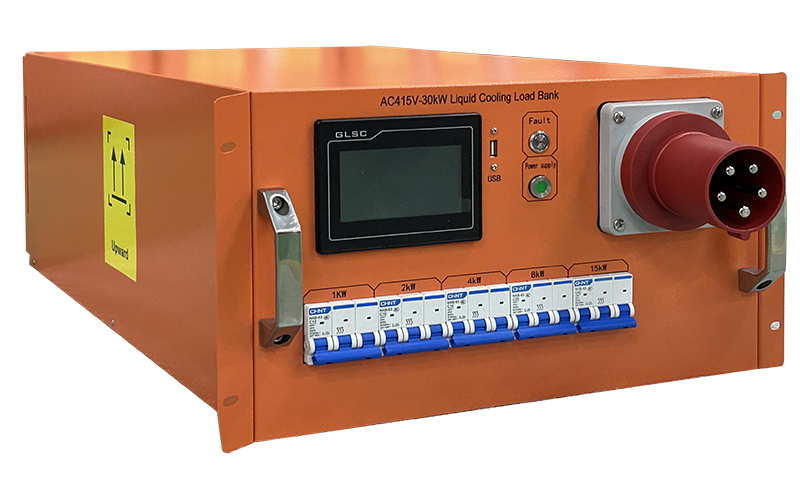5 Key Details to Consider When Purchasing a Liquid Cooled Load Bank
Time:2025-10-17
Against the backdrop of the upgrading of high-density computing power in data centers and the continuous increase in the power of new energy equipment, liquid cooled load banks have become core equipment in high-power testing scenarios due to their advantages of efficient heat dissipation and precise temperature control. However, the quality of products on the market varies greatly. If key details are ignored during procurement, it may easily lead to poor equipment adaptability, soaring operation and maintenance costs, and even affect testing safety. The following 5 core details are key points that must be focused on when purchasing a liquid cooled load bank.
First of all, attention should be paid to load accuracy and adjustment range. The core function of a liquid cooled load bank is to simulate a real load environment. If the load accuracy deviation is too large, it will directly affect the accuracy of test data. The load accuracy of high-quality products should be controlled within ±1%. At the same time, it is necessary to confirm whether the load adjustment range of the equipment covers the actual application scenario based on its own testing needs. For example, new energy charging pile testing needs to cover a wide adjustment range of 0-200kW, while server testing may focus more on precise control in the medium and low power range, to avoid equipment idleness due to mismatched adjustment ranges.
Secondly, heat dissipation efficiency and temperature control capability are the core competitiveness of liquid cooled load banks. During procurement, it is necessary to check the heat dissipation power density of the equipment and the applicable type of cooling fluid (such as water cooling, ethylene glycol solution, etc.) to ensure that it can stably control the temperature under high load conditions. At the same time, attention should be paid to the temperature control response speed of the equipment. When the load changes suddenly, high-quality products can control the temperature fluctuation within ±2℃ within 30 seconds, avoiding equipment failure or test interruption due to sudden temperature rise.
Thirdly, safety protection design cannot be ignored. Liquid cooled load banks involve high power and cooling fluid circulation, so comprehensive safety protection is required. During procurement, it is necessary to confirm whether the equipment has overcurrent, overvoltage, overtemperature, and leakage protection functions, as well as a cooling fluid leakage detection device. For example, when a leak is detected, the equipment should automatically cut off the load and issue an alarm. In addition, the insulation level of the equipment shell should meet the standard of IP20 or above to avoid safety accidents caused by accidental contact.
Fourthly, compatibility and scalability need to be planned in advance. Liquid cooled load banks need to be compatible with other equipment in the test system (such as data loggers, control cabinets). During procurement, it is necessary to confirm whether the equipment supports mainstream communication protocols such as RS485 and Ethernet to ensure real-time data transmission and integration. At the same time, if there is a possibility of upgrading testing needs in the future, it is necessary to choose products that support modular expansion. For example, the power can be increased by adding load modules to avoid cost waste caused by repeated procurement.
Finally, after-sales service and technical support are the guarantee for long-term stable use. Liquid cooled load banks are precision equipment, and professional technical support is required for later operation and maintenance. During procurement, it is necessary to understand whether the manufacturer provides installation and commissioning, regular calibration services, and fault response time. High-quality manufacturers should be able to provide remote technical support within 24 hours and on-site maintenance within 48 hours. At the same time, it is necessary to confirm the warranty period of the equipment (at least 1 year) and the supply cycle of vulnerable parts to avoid affecting the test progress due to delayed after-sales service.
In conclusion, the procurement of liquid cooled load banks needs to be comprehensively considered from multiple dimensions such as functional adaptation, safety and stability, and long-term use costs. The above 5 details are directly related to the use value and test effect of the equipment, and need to be verified one by one to select high-quality products that truly meet the needs.
News Recommendation
-
 2024-09-11
2024-09-11TRIUMPH LOAD EXHIBITING AT Enlit Europe 2024 -BOOTH 7.H08
-
 2023-04-21
2023-04-21TRIUMPH LOAD EXHIBITING AT DATA CENTER WORLD GERMANY 2023-BOOTH F909
-
 2023-04-06
2023-04-06TRIUMPH LOAD EXHIBITING AT ELECTRIC POWER TECH KOREA 2023 – Booth G109
-
 2022-05-05
2022-05-05What is the role of ac load bank for power supply?
-
 2022-05-05
2022-05-05What is the role of the load bank?


